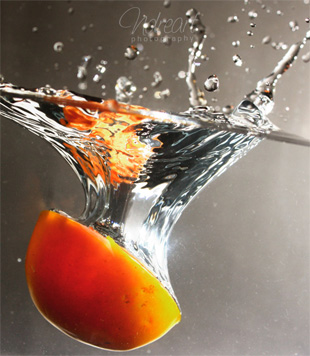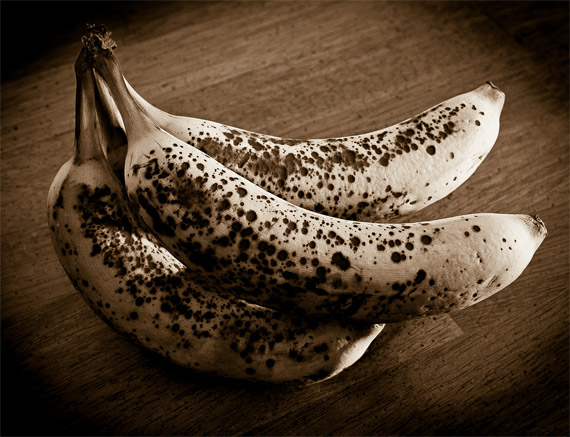Posted: 14 Mar 2012 09:13 PM PDT In photography there are as many mediums as there are people with interests. When most are getting started with photography, they often times start with still life and with time progress towards landscape shots, candid shots or portraits. You learn a lot of the basics when if comes to still life photography, such as the use of shadows and light. This helps the photographer find the subjects emotion. Below, you’ll read about various aspects of still life photography. Still life is one medium that allows the photographer to express themselves as a photographer while using objects like flowers, trees and fruit. When getting started with still life, the most important step is the lighting. You’re looking for light coming from a single direction for the purpose of casting light and shadows. If there is too much light, you can use reflectors to tone the light down. Use side lighting for still life photography. Doing this will help you attain more contrast between the objects of interest. The good thing about still life photography is you have color control. As the photographer, you select the color of the object. When choosing colors with say, flowers you want to ensure you have a contrast but still keep the natural look. You want to attain harmony as it relates to controlling colors. You want to capture the attention of the on lookers eye. If you look at the colors and are not very pleased with it, there is a good chance the on looker will not be pleased with the colors neither. You can be abstract with still life. You can put two objects together that are unrelated. The fun thing about art is you can do anything you like. What some may consider art others may think is trash. Whatever you do, please don’t allow the views of others to determine what it is that you like. Taking the kind of photos that you like is what helps you become a better photographer and in the process you’ll start to focus in on the mediums that you enjoy the most. Once you find out what you like the most, you’ll become better at taking shots because of your desire to become better. Variation is also another aspect that you have control over. Using the same subject with a different background is a part of having variation control. One note of warning when using variation is to be sure to avoid clutter. When using variations take several shots of your subject. This will help you find a even balance of harmony between all of the subjects. Still life photography may not be as exciting to some as a place to start but it’s a great stepping stone for moving on to other mediums. Applying what you’ve learned in still life can lead to working for magazines. Magazines have a lot of still life images. Using still life as your medium requires having a good eye just like all other forms of photography. Don’t limit yourself to the kind of subjects to capture. Select subjects that grab you. You want to capture subjects that will grab others as well. This will lead to you gaining confidence in your work and eventually being able to sell your work on the open market. If you follow my tips and continue to study this medium, you’ll be well on your way to becoming a great photographer and moving on to different mediums. You never know, you may decide to pursue still life for the duration of your photography endeavors. About the Author: Keith S. Black has many different photography methods. He is a successful photographer and makes a full time living as a photographer. To find out about one of the best cameras to use for your photography you can visit: http://reviewdslrcameras.com/nikon-reviews/ to read one of Keith’s Nikon Reviews and get more information. This video walks us through the process of making creative still life photography. Mark will demonstrate how to use an aquarium to capture engaging images of ordinary household items. From a strawberry to food coloring, step by step instructions for creating unique still life images (for those of you reading this by email you can see the video here): Have fun and good luck with your still life photography efforts! Go to full article: How to Take Better Still Life Photos What are your thoughts on this article? Join the discussion on Facebook or Google+ Article from: PictureCorrect Photography Tips |
Posted: 14 Mar 2012 01:24 PM PDT What is cooler than getting to see one of the first Lamborghini Aventadors that was shipped to North America? Just ask Blair Bunting who was fortunate enough to photograph it. The shoot, which took place in Scottsdale, Arizona, is a perfect example of getting the job done right with minimal equipment. Of course, the term minimal is objective, but considering the amount of lights that are normally used in shoots of this caliber and the lights that Bunting got the job done with, I’d say Bunting is winning. So what did he use to illuminate the Italian beauty? A pretty basic setup which consisted of nine Profoto heads powered by Profoto 7a Packs and a very awesome 30-foot Chimera Softbox. Bunting, who is full of surprises, furthers displays his awesomeness when he touts he could have -and has done in the past– “the same thing with a 60-watt bulb plugged into a softbox on a stick. “Okay, Blair Bunting, you have our attention. To see the nine-light setup and an brief explanation of the light bulb on a stick method, take a look at the video below (for those of you reading this by email you can see the video here). Fair warning though, this car is super sexy so try not to drool on your keyboard too much. Pretty awesome, right? In case you were too busy car gawking and missed out the specifics of the light setup, here’s a breakdown of the shoot.
 One of the First Lamborghini Aventadors Go to full article: Studio Car Photography Tips What are your thoughts on this article? Join the discussion on Facebook or Google+ Article from: PictureCorrect Photography Tips |
Tags:
Photography Learning







0 comments:
Post a Comment